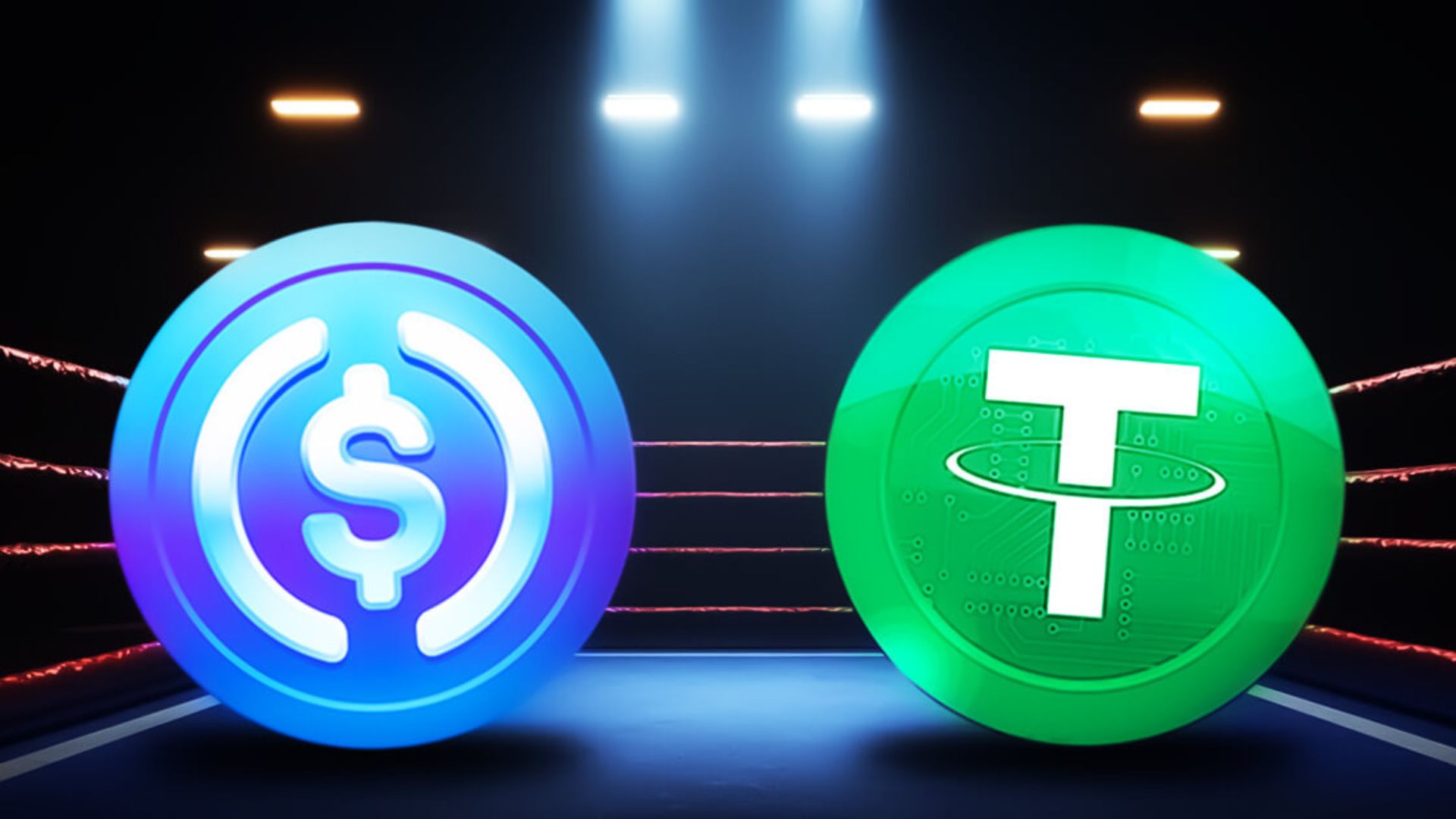In the rapidly evolving world of cryptocurrency, stablecoins have become a cornerstone of liquidity, trading rails and digital-dollar interoperability. Among them, two names dominate: USDT vs USDC. These two stablecoins boast the largest market capitalisations in their category, and for many investors, swap-users and institutions alike, choosing between USDT vs USDC is a meaningful decision. In this article, we’ll compare the two biggest stablecoins by market capitalisation, exploring their background, features, backing, transparency, use-cases and risk profiles so you can understand how they differ and what that means for you.
Landscape of Stablecoins
What are stablecoins and why y they matter
Stablecoins are digital tokens designed to maintain a stable value relative to a fiat currency (most commonly the U.S. dollar). They serve as a bridge between volatile cryptocurrencies and fiat currencies, allowing users to transact, save, lend and trade without exposing themselves to the wild swings of Bitcoin or Ether. The stability, or at least the aim of stability, makes stablecoins a foundational piece of the digital-asset ecosystem.
Why USDT vs USDC is such a key comparison
Because USDT and USDC dominate the stablecoin market by several orders of magnitude, comparing them is not just academic—it reflects how most crypto users move value, trade, hedge risk or interface with decentralised finance (DeFi). In the realm of “digital dollars”, choosing the right stablecoin can influence liquidity, trading costs, counterparty risk and regulatory exposure. We therefore explore the two side-by-side, dissecting what makes them similar and what separates them.
Overview of USDT and USDC

A brief history of USDT
Tether Limited launched USDT in 2014. It was among the first fiat-pegged stablecoins and quickly became popular on exchanges as a dollar-denominated trading pair, replacing or supplementing actual USD deposits. Because of its early entry and broad blockchain support, USDT gained extensive adoption and a large market share.
A brief history of USDC
USD Coin (USDC) launched in 2018, via the Centre consortium (including entities such as Circle Internet Financial and Coinbase). Since then, it has grown rapidly, attracting users who prioritise transparency, regulatory compliance and institutional credibility. Although it entered later than USDT, USDC has carved a niche as the “regulated alternative” in the stablecoin space.
Market Capitalisation, Liquidity & Adoption
Market capitalisation and dominance in the market
When we compare the two, USDT typically holds a larger market capitalisation than USDC, reflecting its dominance in trading pairs and issuance. For instance, USDT has enjoyed extended leadership in terms of total supply and market cap. Meanwhile, USDC has been catching up, but still trails in sheer size.
Liquidity, exchange support and usage
USDT is widely supported across exchanges and blockchains and is often the default “digital dollar” for traders converting in and out of volatile assets. USDC, while also supported on many networks, tends to see heavier usage in institutional or compliance-focused environments, DeFi protocols and regulated rails. Therefore, re the “which one has more liquidity” question tilts towards USDT, but that’s not the only dimension that matters.
Backing, Transparency and Trust
How USDT is backed and its transparency record
One of the key differentiators in the USDT vs USDC debate is backing and transparency. USDT’s backing consists of a mix of assets, including cash, equivalent assets, treasury bills and other investments. Historically, USDT has faced regulatory scrutiny over its reserve practices and audit transparency. For example, regulators found that Tether had misrepresented its backing in past years. While Tether has made improvements, it still doesn’t enjoy the same level of “snapshot transparency” some users expect.
How USDC is backed and its transparency record
By contrast, USDC’s backing is generally described as cash and cash equivalents, short-dated U.S. Treasury bills and overnight repo agreements with regulated institutions. USDC publishes monthly attestation reports from independent accountants, offering a relatively higher level of reserve transparency. For users prioritising regulatory clarity and trust, USDC has become a go-to stablecoin.
Why backing and transparency matter in a stablecoin
The very promise of a stablecoin is that it will reliably hold its peg (typically 1 USDC = 1 USD, or 1 USDT = 1 USD). If the reserves backing the token are questionable, or if transparency is weak, the risk of a de-peg or collapse (or forced suspension of redemption) rises. In the realm of large market participants, these credibility signals matter a lot: reserve transparency, audit frequency and regulatory compliance can affect user confidence, trading spread, redemption conditions and overall stability.
Regulatory and Compliance Considerations

Regulatory environment for stablecoins
Stablecoins operate at the intersection of cryptocurrency innovation and traditional financial oversight. Regulatory frameworks worldwide are evolving to impose reserve requirements, disclosure obligations, anti-money-laundering (AML) rules and consumer protections. In this regulatory climate, issuers like Circle (for USDC) emphasise compliance and bank-grade controls, while Tether has historically operated with less regulatory clarity (though it has increased governance and disclosures).
USDT vs USDC: compliance and legal status
USDC tends to position itself as fully compliant, supported by regulated institutions and subject to more regular public disclosures. USDT, while widely used and extremely liquid, has had to defend its reserve practices and regulatory status. For example, in some jurisdictions, questions about the backing of USDT have triggered regulatory scrutiny and enforcement actions. These differences manifest not only in public perception but in how conservative institutions may choose which stablecoin to hold for treasury or settlement use.
Implications for users
For a retail user, the difference may seem abstract; but for a corporate treasury, institutional fund, or regulated platform, the compliance dimension can determine whether a stablecoin can be accepted on-balance-sheet, used for settlement or interfaced with banking rails. Therefore, when deciding between USDT vs USDC, the regulatory and legal posture of each issuer matters.
Use-Cases and Ecosystem Integration
Trading, exchange pairs and everyday usage
In terms of raw utility for trading, USDT remains king. Because of its high liquidity and wide support across exchanges and blockchains, many traders choose USDT for fast entry and exit from volatile positions. In that sense, USDT offers excellent “digital dollar” rail coverage. USDC also functions similarly, but some trading venues or pairings may default to USDT simply because of its entrenched status.
DeFi, payments and institutional use
USDC often appears in cases where regulatory compliance, transparency and institutional counterparties are key. Because of its reserve structure and audit regime, more institutions may be willing to integrate USDC in settlement flows, treasury management or regulatory-friendly DeFi protocols. Meanwhile, USDT’s ecosystem is broader in terms of sheer volume and number of applications, giving it a huge reach.
Cross-border transfers, remittances and global adoption
Both stablecoins facilitate cross-border value movement far faster than traditional fiat rails. However, USDT’s longstanding presence has led to widespread acceptance, especially in markets where local banking rails are weaker or crypto adoption is higher. USDC also supports cross-border flows and is increasingly used for remittances, but its regulatory-friendly angle sometimes means stricter KYC or banking onboarding compared to purely crypto-native flows.
Risks, Recent Events and Hidden Factors
De-peg incidents and historical risk
Even “stable” coins face stress. A key lesson in the USDT vs USDC comparison came during the crisis surrounding Silicon Valley Bank in 2023. USDC briefly lost its peg to the dollar due to large exposures of its issuer’s reserves. That incident served as a reminder that even transparent stablecoins are exposed to financial system risk.
Counterparty and issuer risk
When holding any stablecoin, one implicitly trusts the issuer and its management of reserves. If the issuer suffers reputational, regulatory or operational shock, the stablecoin might get impaired, suspended, or face redemption bottlenecks. In the USDT vs USDC debate, the issuer risk for USDT has been historically higher in perception due to past reserve disclosures; for USDC, while transparency is higher, deposit banking exposures and regulatory risk (especially in U.S. banking law) remain relevant.
Network and smart-contract risk
Beyond backing, stablecoins also rely on blockchain networks, smart contracts and crypto infrastructure. Both USDT and USDC live on multiple blockchains (for example, Ethereum, Solana, Tron, etc.). A bug, forking issue, network shutdown or bridge-attack in one of those chains can propagate risk to users. This is a shared risk between USDT and USDC—though the breadth of USDT’s chain support means a slightly broader attack surface.
Comparing Key Attributes: Side by Side
Transparency & auditing
USDC leads in monthly attestations and clear reserve disclosures.USDT, while improving, still carries more scepticism among certain institutions about the clarity and completeness of its backing.
Market coverage & liquidity
USDT wins this category: larger supply, more trading pairs, deeper liquidity, broader chain support. USDC is growing fast, but lags in raw volume.
Regulatory & institutional appeal
USDC is positioned more strongly for regulated users, financial institutions, corporate treasuries and compliance-sensitive environments. USDT is more crypto-native, widely used, but perhaps less “institutionally packaged”.
Cost of redemption & usability
Some platforms impose higher minimums or restrictions on redemption of USDT compared to USDC. For example, USDC may allow lower-threshold redemption from the issuer.
Growth trajectory and innovation
USDC has gained favour in DeFi and institutional flows, while USDT continues to dominate established trading rails. The long-term question is whether USDC’s compliance edge will lead to eventual parity in market cap or even dominance. Some recent research suggests the stablecoin ecosystem is evolving into a hybrid monetary environment where both play complementary roles.
Which One Should You Choose?
Choosing between USDT vs USDC ultimately depends on your priorities and use case. If you are a trader for whom liquidity, minimal spread and broad exchange support matter most, USDT may offer the most convenience. If you are a corporate treasurer, institutional investor or compliance-sensitive user prioritising transparency, redemption ease and regulatory clarity, then USDC may be the stronger choice.
Be mindful of the following when making your decision:
-
How critical is instant liquidity and exchange-pair coverage for you?
-
What is your tolerance for issuer risk and reserve opacity?
-
Are you operating in an environment (jurisdiction or counterparty) where regulatory compliance is pivotal?
-
How important is redemption/fiat conversion ease and institutional acceptance to your strategy?
And remember: holding a stablecoin is not entirely without risk. Reserve backing, issuer health, banking relationships, network infrastructure and regulatory exposure all play a role. By comparing USDT vs USDC on all these axes rather than simply picking the “biggest one”, you can choose the stablecoin that aligns best with your individual needs.
Future Outlook and Emerging Trends
The stablecoin sector is changing rapidly. As regulation around digital assets tightens, the compliance credentials of issuers will matter more than ever. For instance, new U.S. regulatory frameworks are under discussion that might impose stricter reserve requirements, transparency obligations and consumer protections. For the largest stablecoins like USDT and USDC, this could influence their competitive positions.
Moreover, as DeFi continues to expand and traditional finance increasingly integrates digital assets infrastructure, we may see institutional demand favour stablecoins with stronger governance and audited infrastructure. USDC’s architecture may benefit from that shift, while USDT’s entrenched usage might remain a major strength.
Finally, innovation in stablecoin issuance, cross-chain settlement, programmable money and tokenised assets could shift the stablecoin landscape altogether — making both liquidity and trust equally vital. In this context, USDT vs USDC is not just a snapshot of today but a window into how digital-dollar rails will form tomorrow.
Conclusion
When comparing USDT vs USDC — the two biggest stablecoins by market capitalisation — it’s clear both have major strengths and trade-offs. USDT boasts unmatched liquidity, widespread adoption and entrenched exchange coverage. USDC offers superior transparency, regulatory alignment and institutional appeal. For traders prioritising speed and liquidity, USDT may be the go-to. For institutions or users prioritising trust, audit assurance and compliance, USDC may win. The best choice depends on your strategy, risk tolerance and required ecosystem access.
In the stablecoin world, no choice is universally “best” — but informed choice matters. By understanding the differences in backing, transparency, regulation and use-cases between USDT and USDC, you can make a decision aligned with your priorities. As the digital dollar rails mature, the competition between USDT vs USDC will remain one of the critical narratives in the crypto-asset world.
FAQs
Q: Is USDT or USDC safer to hold?
Safety depends on your criteria. USDC is generally considered safer in terms of transparency and regulatory oversight, while USDT benefits from a longer track record and deeper liquidity but has more questions around reserve disclosures.
Q: Can both USDT and USDC be redeemed for U.S. dollars?
Yes, but the process, minimums and conditions vary by issuer, platform and jurisdiction. Typically, institutional users may access direct redemption; retail users may rely on exchanges.
Q: Will USDT or USDC always maintain a 1 peg to USD?
Both aim to maintain the peg, but past events (e.g., banking exposures) show that de-peg risk, while low, is not zero. Users should monitor issuer reserve practices and systemic risks.
Q: Which stablecoin is better for DeFi usage?
It depends on the protocol: many DeFi platforms list both, but USDC may be preferred by compliance-aware protocols and institutions, while USDT may dominate in high-volume trading pools.
Q: Does market capitalisation alone determine which stablecoin is better?
Not entirely. While market cap indicates size and adoption, factors like transparency, reserve backing, redemption ease, regulatory status and network support are equally (or more) important depending on user needs.
Read more: Blockchain in Global Finance: How It Became Mainstream in 2025




